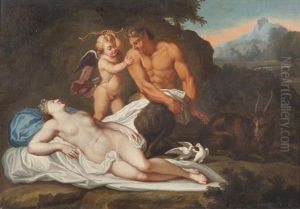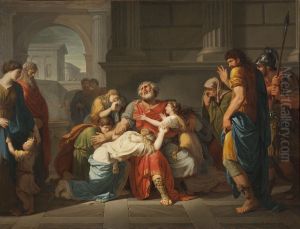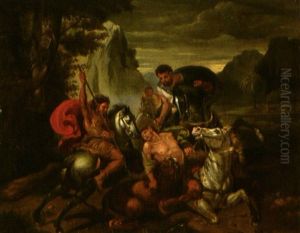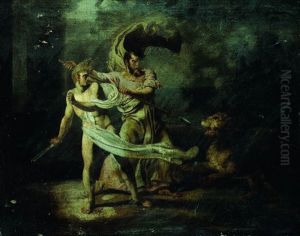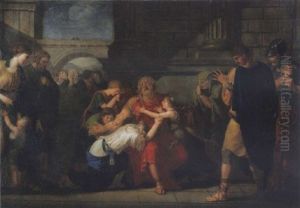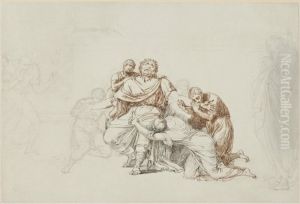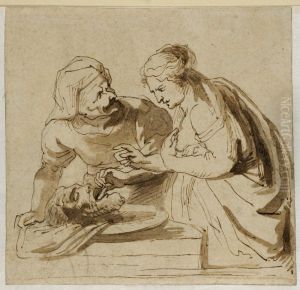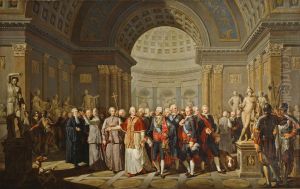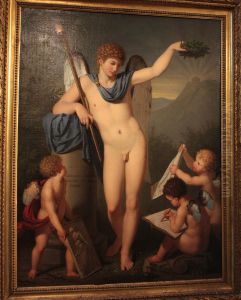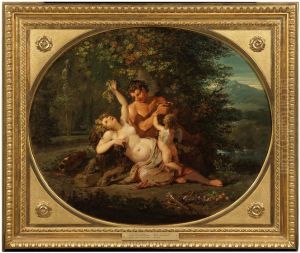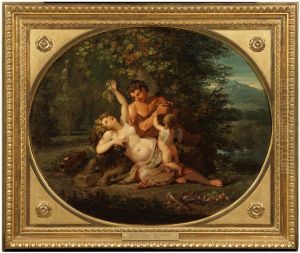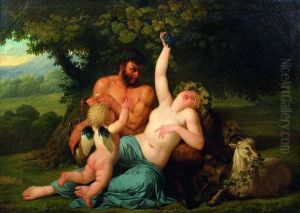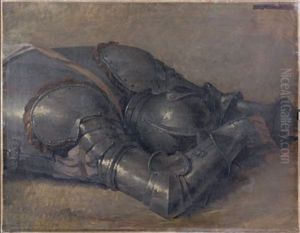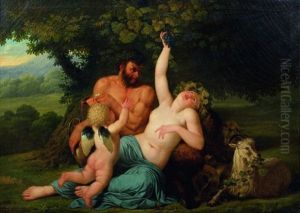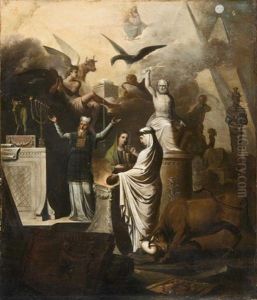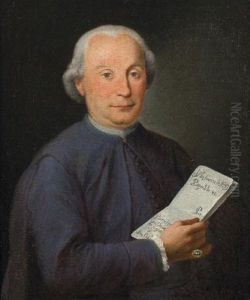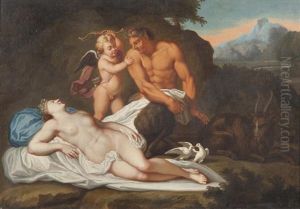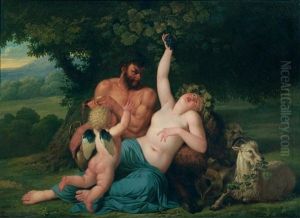Benigne Gagneraux Paintings
Bénigne Gagneraux was a French painter and engraver born on April 29, 1756, in Dijon, France. He is best known for his neoclassical style, which was in vogue during the late 18th century, coinciding with the last days of the Ancien Régime and the beginning of the French Revolution.
Gagneraux showed an early talent for art, which led to his initial training under the local artist François Devosge at the École de Dessin in Dijon. His burgeoning skills were recognized with a prize in 1773, which afforded him the opportunity to continue his studies in Paris. There, he became a pupil of the celebrated neoclassical painter Jacques-Louis David, who was a significant influence on his style and artistic development.
During his time in Paris, Gagneraux honed his skills and began to establish a reputation as a talented artist. His works often depicted scenes from ancient history and mythology, reflecting the neoclassical preoccupation with the art and culture of ancient Greece and Rome as ideals of beauty and virtue. Despite his talent, Gagneraux struggled to gain the same level of fame as his contemporaries, such as David or Jean-Auguste-Dominique Ingres.
Seeking greater recognition and opportunities, Gagneraux left France for Italy in 1783, where he lived and worked for the remainder of his life. In Rome, he became associated with the circle of artists and intellectuals at the French Academy. His time in Italy was productive, and he received commissions from notable patrons, including Pope Pius VI for whom he completed a series of engravings.
Gagneraux's works were characterized by their clear composition, precise drawing, and the smooth finish of his paintings. His adherence to neoclassical principles was evident in his careful attention to the human form and the use of classical motifs and subjects. Some of his notable works include 'The Death of Lucretia' and 'The Anger of Achilles.'
Tragically, Bénigne Gagneraux's career was cut short when he died prematurely at the age of 39, on July 16, 1795, in Florence, Italy. His death was a loss to the art world, as he had shown great promise and could have contributed further to the neoclassical movement. Despite his early death, Gagneraux left behind a body of work that continues to be appreciated for its clarity, historical accuracy, and adherence to the neoclassical style that dominated European art at the time.
